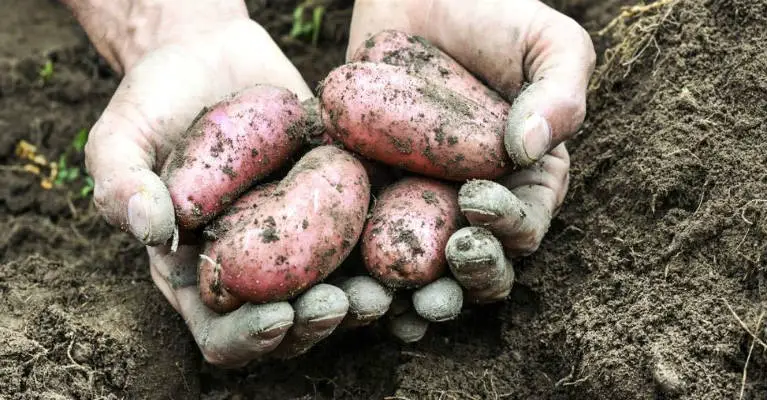As the old saying goes – you are what you eat. This saying can be applied to our ancestors too. However, learning what they had on their menu is a difficult task.
Of course, we cannot find any written documents from this time. That’s why scientists must use archeological findings and analyze the ingredients found in bones to get a clearer picture.
Scientists were well aware that the daily diet of our forefathers had significantly changed once they started consuming meat. However, recent research published in the Quarterly Review of Biology suggests that there is another item that has played an equally important role in this process – carbs. This type of nutrient is certainly not among the popular paleo diet foods today.
However, this doesn’t stop scientists from claiming that the beginning of the use of cooked starches has helped our ancestors to provide enough energy to the brain.
What follows in the next stage in human evolution? Race will be an obsolete concept
About 7 million years ago, our forefathers decided to take a different road and separate from apes. At this time, our oldest ancestors were practicing a diet that consisted mostly of raw plants rich in fiber.
Several million years later, these so-called hominins included meat in their diet. Some of the earliest proofs of this practice are about 3.3 million years old. Some stone tools and mammal bones with cut marks were enough for scientists to come up with such a conclusion. At first, hominins were focused on searching and collecting meat from animals that were already dead.
Of course, at some time, they have started to cook and prepare meat, but the scientific community is divided about the exact period when this happened. There is no doubt that humans were able to make fire about 300.000 years ago, but according to some researchers and scientists, they were able to do this much earlier (1.8 million years ago).
Regardless of the answer to this question, the fact is that cooked meat was able to bring much-needed fat, protein, and energy and help hominins grow and procreate. However, Mark G. Thomas, a respected evolutionary geneticist at University College London, and his team claim that another food contributed to this evolution – tubers and other plants rich in carbs.
The human body can turn starch into glucose – the fuel in your body. This process starts the moment we start chewing the food. Our saliva includes amylase, an enzyme that starts to decompose starchy foods.
 A recent study indicates that the frequent use of cooked tubers and similar starchy plants by our ancestors has definitely affected human evolution.
A recent study indicates that the frequent use of cooked tubers and similar starchy plants by our ancestors has definitely affected human evolution.
But, the truth is that amylase doesn’t provide good results on raw starches. The situation is much better when it comes to cooked foods. Cooking is a process that makes potatoes 20 times more digestible.
Cooking was the reason why wild tubers became more useful to humans which is very important, especially at these times when people lacked food.
Fathers today take even less care than their ancestors did during the Stone Age
There is another solid evidence of the significance that carbs have and it can be found in human DNA. The closest relative to humans in the animal world – chimpanzees, have DNA that includes two copies of the amylase gene. However, people have more copies – up to 18 in some cases. The more copies we have the more successfully we can use this enzyme and extract more nutrients from starches.
When these extra genes were discovered for the first time, scientists believed that this enhanced amylase production in humans occurred thanks to the emergence of agriculture some few thousand years ago. When wheat and similar starchy crops became staples, the evolution gave people more amylase.
This is what scientists believed for many years, but recent studies focused on human DNA found in European pre-agricultural hunters have shown that people had these extra copies before they developed farming. According to Thomas and his team, it was the fire, not agriculture, that led to the development of extra copies of amylase genes.
When our ancestors started using cooked starchy foods, they were forced to evolve to get more amylase and use glucose in the right way.
This mutation that led to extra copies of amylase was spreading fast. The glucose that humans got, helped them find energy which led to the development of bigger brains.
If we compare the fossil evidence of hominin brains, we can see that the size of the brains started to grow drastically around 800.000 years ago. Today, our exceptionally large brains use about 25% of the calories we take.
Many experts say that Thomas and his team have put in order a lot of interesting evidence for the impact of carbs on our evolution.
However, they believe that this theory still needs to be analyzed more thoroughly because many elements are missing.
According to Greg Wray, a famous evolutionary biologist at Duke University, Thomas and his team may be on the right track, but this is not a definitive answer. Among other things, scientists have still not determined when exactly humans invented fire and when the evolution of amylase genes happened.
Thomas agrees that their findings are not sufficient to propose certain dieting tips. He claims that evolutionary biology can help people improve their diet and health, but nutrition is very complex and it will take time before we make some solid conclusions.
– 2015 New York Times News Service
